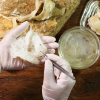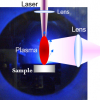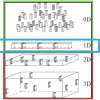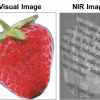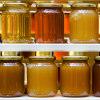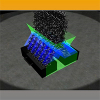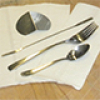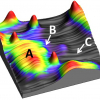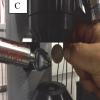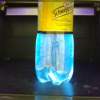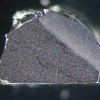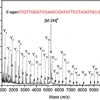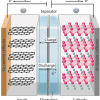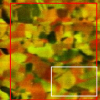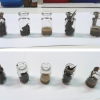Articles and Columns
Edible bird’s nest (EBN) is a highly valued food, especially in China. Due to this, there is the potential to bulk out the EBN with artificial additives to receive a higher price. This article shows yet another way in which spectroscopy is used to detect adulteration of food and prevent fraud in a quick and cost-effective manner.
This is the first of a number of columns dealing with process sampling, i.e. sampling from moving streams of matter. As will become clear there is a great deal of redundancy regarding how to sample both stationary and moving lots, but it is the specific issues pertaining to dynamic lots that will be highlighted.
We all know how spectroscopy and other analytical technologies have played important roles in detecting fraud and in authentication. Paper collages, or photomontages, are part of the art market that is seeing much interest amongst collectors. It is difficult to detect forgeries just through expertise. The use of NIR imaging offers a number of ways to identify forgeries or authenticate the collage non-destructively; from determining the glue used to the revealing of printing on the back of the pieces or paper, which often have been taken from books and magazines.
Peter Jenks and Alan Nichols plot a path through the accreditation jungle and decide that “Confidence: the key to quality”. With increasing numbers of readers’ labs requiring auditing, ensuring that the reference materials and standards you are using meet the requirements of the auditors is essential.
Tony Davies and Robert Lancashire ask “How standard are your standards?”. They describe a number of the organisations working with standards that affect the spectroscopy field. It looks as if free access to these may be the only way to ensure their longevity.
X-ray spectroscopy techniques have some advantages over other atomic spectroscopy techniques in the analysis of foods, for instance in not requiring significant sample preparation. Amongst these, TXRF has higher sensitivity and limits of detection in the ng range. The authors look at the analysis of a number of very different foods, including seafood, honey and vegetables.
Kim Esbensen and Claas Wagner have produced an extensive Sampling column, on “Representative mass reduction in the laboratory: riffle splitting galore (with or without errors)”. They guide readers through the choice of mass reduction equipment and what needs to be done to ensure representative sampling.
Kim Esbensen and Claas Wagner continue to stress that grab sampling is still an absolute no-no regardless of the size of the sampling device or the sample.
Next year, a new version of ISO/IEC 17025 will be published, which is going to mean changes for all those involved in quality systems. Peter Jenks investigates.
Tony Davies and Steven Brown explore the solid-state nuclear magnetic resonance spectroscopy facilities at the University of Warwick, UK.
This article demonstrates the capability of the near-field method to probe polymer microspheres within a protein matrix, and we present the first IRSR photothermal near-field Fourier transform infrared (FT-IR) spectrum from within an individual biological cell, which establishes the feasibility of hyperspectral mapping at sub-micrometre resolution in a practical timescale.
The CAL(AI)2DOSCOPE (Cryogenic Absorption/Luminescence Alignment Independent Alternative Intermittent Detection Optical µSCOPE) is a microspectrometer that was constructed with the aim to facilitate the correlated investigation of absorption and fluorescence emission properties of nanovolumic protein samples under modulatable actinic illumination.
Whilst the major components of food are usually non-fluorescent, many minor food components that affect its nutritive, compositional and technological quality are fluorescent. Given its sensitivity, ease of use and non-destructive nature, this makes it useful in many applications around monitoring food processing and in fundamental food research.
This article is is a fascinating look into the use of laser ablation inductively coupled plasma mass spectrometry in forensic examination of glass fragments. These are often associated with crime scenes and easily “attach” to any people near them. Thus, they can be used to link criminals to their crime and to provide information on where a glass fragment might have originated.
International standards need to keep pace with the innovation in analytical equipment and practices. For example, many of the advances in nuclear magnetic resonance (NMR) spectroscopy reported in this journal in recent years have yet to find themselves mirrored by updates in the respective Recommendations of the International Union of Pure and Applied Chemistry (IUPAC), nor in the many and varied proprietary recommended reporting formats of the different peer-reviewed primary scientific journals. Not that every innovation needs to be “standardised”: with the speed of many developments it is important to find the right balance between reacting to real movements in a field and enshrining a short-lived fad in a IUPAC Recommendation.
This article gives a most useful overview of the analysis and sequencing of nucleic acids by matrix-assisted laser desorption/ionisation mass spectrometry, which should interest all readers and may well serve as a useful tutorial article.
Lithium ion batteries power most of the electrical devices we rely on every day. As well as mobile phones, laptops and tablets, they are finding increasing use in vehicles, with electric cars not uncommon on our streets. This article is from a young scientist who has won help for her research through an instrument company’s support programme. You can find out more, read the article and even apply yourself.
There are a number of advantages of Raman microspectroscopy, including its the ease of its application, as in many cases no or very little sample preparation is needed and the experiments are performed at atmospheric pressure.
The study of metabolites in our sewage systems is not new, but there are particular difficulties with identifying the metabolites from new psychoactive substances, or “legal highs”. The authors describe a wide range of sample collection methodologies and their analysis with mass spectrometry.

